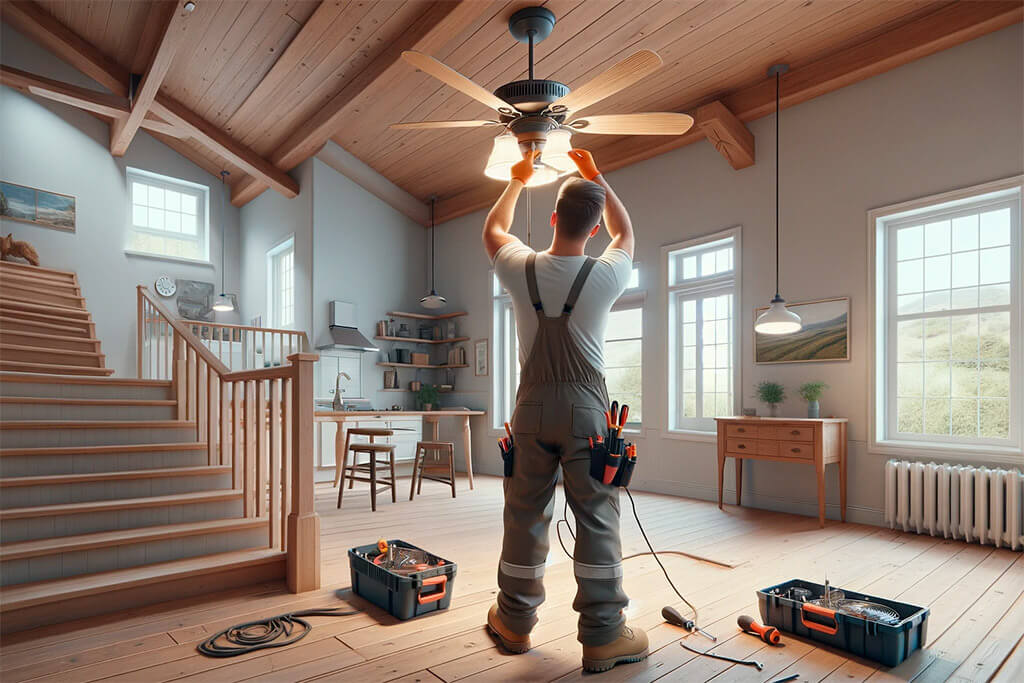Embarking on the task of removing a ceiling fan might appear straightforward, but it is peppered with nuances that can make or break your project. I’ve encountered numerous situations where homeowners decide to replace a fan for more efficient models, to update the aesthetics of a room, or simply because the existing one is beyond repair. Understanding these motivations and their implications is key for both DIY enthusiasts and professionals in the field. Let’s delve into this process, ensuring clarity and comprehensibility every step of the way.

Preparatory Steps
Safety First: Priority one is always safety. Electrical work, no matter how minor it seems, demands respect and caution. Ensure the power supply to the fan is entirely cut off by switching off the circuit breaker or removing the fuse. For added assurance, a non-contact voltage tester is a reliable tool to confirm the absence of electricity.
Tools You’ll Need: Proper tools not only simplify the task but also enhance safety. Here’s a concise list of what you’ll need:
- A robust ladder, ensuring stability and ease of access.
- A set of screwdrivers, catering to different sizes and types of screws.
- Wire cutters or strippers, crucial for handling electrical connections.
- Depending on your fan model, a wrench or socket set may be necessary.
- Protective gear like gloves and safety glasses are non-negotiable.
Step-by-Step Guide to Removing a Ceiling Fan
1. Power Off: Once you’re certain the power is off, proceed with confidence. Never underestimate the importance of this step.
2. Accessing the Fan: Position your ladder securely. Begin by carefully removing any light fixtures or shades, followed by the fan blades. This reduces the bulk of the unit, simplifying the subsequent steps.
3. Unscrewing the Fan: Expose the mounting bracket by removing the canopy. This step requires attention to detail as the components here are integral to the fan’s stability.
4. Disconnecting the Wires: Inside the canopy, you’ll encounter the fan’s wiring. Typically, these include black (hot), white (neutral), and green or bare (ground) wires. Disconnect them with care, keeping track of their configuration. A tip: taking a photo can help you remember their arrangement.
5. Removing the Fan Unit: Lower the fan unit carefully. If it’s heavy or awkwardly sized, having an assistant is prudent. Always prioritize safety and control over speed.
6. Final Checks: Inspect the ceiling for any signs of damage. Ensure all components of the fan are accounted for, including screws and wire nuts.

Alternatives and Tips
When considering the removal of a ceiling fan, it’s essential to weigh the options. Often, a full removal isn’t necessary. A wobbly ceiling fan might just need a balance check and adjustment. If the motor sounds like it’s struggling, sometimes a bit of lubrication or a new capacitor does the trick. These small fixes can extend the life of your fan without the need for complete replacement.
Dealing with antique or bespoke models requires a bit more finesse. These fans often have unique parts and might need special attention or tools for safe removal. It’s always wise to consult the manufacturer’s guidelines in these cases. This approach saves time and helps avoid unnecessary damage to both the fan and your ceiling.
Post-Removal Steps
Ceiling Repair and Maintenance: After removing the fan, you might notice some marks or holes left in the ceiling. These are easily remedied with a bit of spackling compound, sanding, and touch-up paint. This attention to detail ensures a clean, professional finish to your project.
Disposal or Storage of the Old Fan: Responsible disposal of the old fan is important. If it’s still functional, consider donating it or offering it to a local salvage yard. For fans that are beyond repair, disassembling and recycling the parts is an environmentally conscious choice. If you plan to store the fan, disassemble it and store it in a dry, dust-free environment to preserve its condition.
FAQ Section
Evaluate your fan’s performance. Common signs that indicate a need for removal include excessive noise, wobbling, or inefficiency. Sometimes, aesthetic updates or energy-efficient upgrades are also good reasons for removal.
Ceiling fan removal is generally within the reach of those with basic DIY skills. However, if the wiring or installation is complex, or if you’re not confident in your abilities, seeking professional help is advisable.
Proceed with caution and patience. Use the right tools for the job, and keep track of all components as you disassemble the fan. Ensure the power is completely off before starting, and handle the wiring with care.
Secure the exposed wires with wire nuts and ensure they are safely tucked away. If you plan to install a new fixture, leave enough wire length for easy installation.
Yes, these fans often have additional wiring or components for the smart features. Consult the manual for specific disassembly instructions and take extra care to properly disconnect any electronic components.
